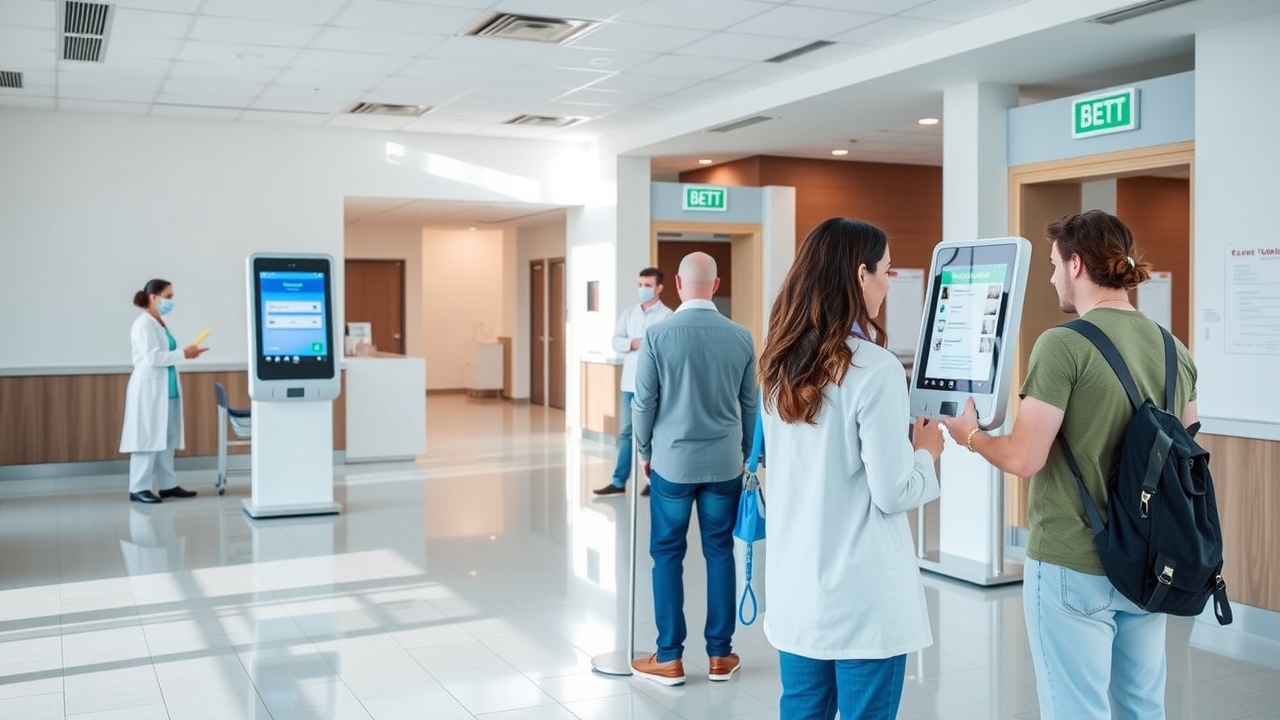
Patients who feel genuinely cared for are 2.5 times more likely to stay loyal—even if they’re paying more for their care. In today’s healthcare environment, delivering an exceptional patient experience isn’t just a nice extra—it’s what sets successful practices apart. Yet, while the topic is often talked about, the true influence of patient experience on loyalty, outcomes, and reputation is still underestimated.
In this editorial, we’ll highlight overlooked strategies, share key insights, and show you how to build lasting patient loyalty by enhancing every stage of the care journey.
Revealing the Truth: Why Patient Experience Optimization Is Healthcare’s Hidden Power
The healthcare industry is rapidly evolving, but a glaring truth remains: Patient experience optimization is far more than offering quality care. It’s an underutilized catalyst driving not only positive health outcomes but also retention, referrals, and unwavering patient trust. While many care organizations focus on medical innovation or operational efficiency, the most successful prioritize the entire experience, from initial contact to follow-up care. This holistic approach transforms one-time visitors into lifelong advocates who choose your healthcare organization again and again.
Consider the impact of streamlined patient access, empathetic interactions, and seamless transitions across departments. These moments, though seemingly routine, are often the invisible threads weaving loyalty and trust. Healthcare providers who optimize patient interactions—whether it’s through clear communication, minimized wait times, or intuitive technology—create elevated care experiences that foster emotional connections. When patients feel seen, heard, and respected, they not only return but actively recommend your facility within their communities.
What You'll Gain from Mastering Patient Experience Optimization
Mastering patient experience optimization starts with understanding the key factors that shape every interaction—from appointment scheduling and wait times to communication and follow-up care. By focusing on these touchpoints, you’ll see how small improvements can have a big impact on patient satisfaction and trust.
Beyond the basics, you’ll uncover often-overlooked insights that directly influence patient loyalty, such as transparency in billing, proactive communication, and seamless digital access. With the right strategies in place, you’ll not only improve the quality of care delivery but also create a streamlined patient journey that encourages long-term relationships and strengthens your reputation in a competitive healthcare market.

Patient Experience Optimization: The Missing Link in Healthcare Loyalty
In the United States, patient loyalty isn’t just determined by cost or convenience, but by the strength of their care experience. Recent studies reveal that practices investing in patient experience optimization see a dramatic increase in retention rates. When care providers focus on transparent communication and efficient access to services, the result is clear: patient satisfaction soars, repeat visits rise, and patient referrals multiply. The healthcare industry is witnessing a new era where quality care and patient access are intertwined with customer loyalty.
The real-world results are undeniable. Healthcare organizations that invest in patient-centric improvements—such as appointment reminders, digital check-ins, and coordinated care delivery—not only enhance the patient experience but also achieve measurable business outcomes. Both individual care providers and system-wide operators now recognize that improving the patient journey is the linchpin for sustainable growth and positive public perception.
Why Patient Access Is Critical for Patient Experience Optimization
Patient access sits at the core of every exceptional care experience. Barriers such as long wait times, inefficient scheduling, or unclear communication can quickly erode trust. Healthcare organizations that prioritize easy scheduling, walk-in flexibility, and rapid test results eliminate friction, turning routine visits into moments of loyalty-building. Optimize patient journeys by empowering patients to choose appointment times and communicate preferences, all while ensuring care delivery remains consistent and compassionate.
A key finding from leading care organizations: healthcare providers who regularly audit and iterate their access pathways—leveraging tech and patient feedback—see significant reductions in missed appointments and an uptick in positive patient experience reporting. This shift requires alignment among care teams, investment in digital solutions, and ongoing empathy training to address evolving needs. Unlocking positive patient experience begins the moment a patient first reaches out for care.

How to Improve Patient Experience: Optimize Every Patient Touchpoint
Streamlining operations starts at the front door. Modern healthcare facilities use digital kiosks, online scheduling systems, and real-time wait time updates to minimize frustration. By reducing barriers —such as confusing paperwork or opaque processes— care providers give patients more control and transparency. This immediate impact is felt right away: patients arrive more relaxed, confident in the efficiency and empathy of their provider.
To further improve patient experience, organizations integrate appointment reminders, follow-up check-ins, and fast-tracked test results via secure digital platforms. Optimizing these touchpoints not only shortens the timeline from booking to care but creates a positive pattern of reliable, predictable service. Every barrier that’s removed represents a step closer to true patient-centered care and improved patient satisfaction scores.
Designing a Seamless Care Experience for Every Patient
Every detail matters. From the moment a patient schedules an appointment to receiving their follow-up reminders, each step should feel effortless and distinctly personal. Personalized care coordination addresses not only medical needs but emotional ones, as well. Empathy training for all staff members ensures every interaction is supportive, respectful, and memorable. This is the foundation of a true positive patient experience.
Healthcare providers must also consider physical space: well-lit, welcoming lobbies, clear wayfinding, and private consultation areas reduce stress and encourage open dialogue between patients and care providers. By optimizing every patient touchpoint , providers signal to patients that their comfort, understanding, and dignity are priorities at every stage of the health journey.

The Role of Technology: Digital Strategies to Enhance and Optimize Patient Experience
Digital solutions are revolutionizing the ways patients access and interact with care. Patient portals, online scheduling, and digital health records reduce administrative barriers and empower patients to play a more active role in their care. Automated appointment reminders and easy online check-in enhance convenience, increase show rates, and boost positive perceptions of your organization.
For healthcare providers, the benefits are equally clear: digital systems can quickly update information, provide real-time test results, and ensure communication is seamless across departments. This not only improves patient care but allows for consistent, measurable improvements in care delivery. The modern patient expects instant access—meeting that expectation is now a baseline for care experience excellence.
Key Digital Optimization Strategies for Patient Experience | ||
Optimization Strategy |
Impact on Patient Experience |
Example |
|---|---|---|
Online Appointment Booking |
Less wait, higher satisfaction |
Portal scheduling |
Automated Reminders |
Reduce no-shows |
SMS/email alerts |
Digital Health Records |
Transparency |
Patient portals |
Virtual Care and Telemedicine: Expanding Accessibility and Patient Experience
Virtual care—through telemedicine, video visits, and remote monitoring—has moved from an alternative to a necessity in modern health care. These options enhance patient access , especially for those with mobility or transportation challenges. For rural patients or those with chronic conditions, virtual visits can ensure timely check-ins, regular test result reviews, and ongoing engagement without the travel burden.
The impact goes beyond convenience: integrating telemedicine into regular workflows reduces appointment bottlenecks, increases scheduling flexibility, and strengthens the provider-patient relationship. The more touchpoints that can be personalized and digitized, the more empowered, satisfied, and loyal your patient base becomes.

Empathy & Communication: Keys to Improving Patient Experience Optimization
Cultivating Trust to Improve the Care Experience
Trust is a cornerstone of quality care across the healthcare industry. Empathy—authentic, actionable empathy—remains the most powerful (and often overlooked) tool in care delivery. Each interaction, whether brief or extended, shapes the patient’s perception of their provider and organization. Healthcare providers who make trust-building communication a daily practice see higher patient retention and better health outcomes.
By actively investing in empathy and open communication, every healthcare organization can transform ordinary care into memorable experiences. These authentic connections ensure patients feel acknowledged, valued, and confident in their care decisions. The message is clear: trust and warmth are not subjective “extras”—they are foundational best practices of patient experience optimization.
Active Listening as an Optimization Tool
One of the easiest ways to enhance patient care? Listen—really listen. Active listening involves understanding what is said (and what isn’t), clarifying concerns, asking questions, and summarizing to ensure patients’ needs are understood. Care teams who practice these skills consistently report greater patient satisfaction and improved outcomes.
By treating each patient’s perspective as unique, care providers can tailor communication, align medical explanations to different learning styles, and defuse anxiety before it starts. Investing in empathy-focused training for all staff solidifies a positive patient experience as an organizational norm, not an exception.
Training Health Care Teams in Patient Experience Optimization
Optimizing patient experience starts with the people patients interact with most—your healthcare team. Training staff to recognize the emotional as well as the clinical needs of patients builds empathy into every touchpoint, from the first phone call to the last follow-up. Workshops on active listening, conflict resolution, and clear communication equip teams to respond with compassion, reduce patient anxiety, and create a supportive environment where trust can flourish.
Equally important is training that reinforces consistency and accountability. When every staff member—from front desk personnel to providers—understands the importance of seamless workflows, transparent communication, and patient-centered care, the entire organization operates with greater efficiency. Ongoing education, role-playing scenarios, and performance feedback keep skills sharp, ensuring teams deliver not just quality care, but also meaningful, memorable experiences that drive patient satisfaction and loyalty.

The Five P's and Four P's: Frameworks for Patient Experience Optimization
Unlocking the 5 P’s of Patient Experience
Purpose
Patients
Processes
Professionals
Partners
The “5 P’s” framework offers a holistic lens for evaluating and advancing organizational efforts in patient experience optimization. By aligning all initiatives—whether digital, operational, or emotional—with a clear purpose, focusing on patients’ evolving expectations, refining processes, investing in skilled professionals, and nurturing community partners, healthcare organizations can systemically improve patient care at every turn.
This comprehensive approach moves the needle beyond one-off improvements. When care providers and system leaders embed the 5 P’s into organizational habits, every patient receives consistent, high-quality, empathetic service—establishing your reputation as a leader in optimizing care experience.
Demystifying the 4 P’s of Patient Experience
People
Process
Place
Performance
The “4 P’s” distill patient experience optimization into its most impactful domains. People —from front desk staff to care providers—shape patient perceptions and relationships. Process ensures every interaction is smooth, efficient, and patient-centric. Place refers to the physical or virtual environment that shapes comfort and accessibility. Performance captures measurable outcomes, ensuring continuous improvement. Focusing equally on these four elements creates a balanced ecosystem where patient satisfaction thrives.
Whether your organization uses the “5 P’s” framework or the “4 P’s,” the real power lies in consistency: across every facility, shift, and department, your values and approaches to patient experience must be reinforced and iterated based on patient needs and feedback. This framework-driven mindset transforms care delivery from transactional to transformational.

Efficiency Meets Empathy: Balancing Workflow and Optimized Patient Care Experience
Streamlining Operations for an Improved Patient Experience
Efficient workflow doesn’t mean cutting corners; it means maximizing the value of every patient interaction. By digitizing administrative tasks, automating reminders, and optimizing care team roles, healthcare organizations reduce bottlenecks and administrative burdens. This lets providers spend more time listening, empathizing, and guiding patients from check-in to post-care follow-up.
Workflow optimization becomes even more critical in high-volume settings. Utilizing dashboards and clear metrics, healthcare managers can quickly spot inefficiencies, streamline care delivery, and address issues before they escalate. The more seamless the behind-the-scenes coordination, the more pleasant and effective the patient-facing experience becomes.
Leveraging Data Analytics to Continuously Improve Patient Experience Optimization
Data analytics is the engine behind continuous improvement in patient experience optimization. Modern care organizations deploy real-time surveys, patient feedback forms, and outcome tracking to identify trends and target problem areas. For example, spotting a spike in waiting room complaints can trigger immediate reviews and workflow adjustments.
By marrying operational data with patient stories, leaders gain a 360-degree view of where care excels and where it needs improvement. When analytics drive strategy, providers can proactively adjust staffing, processes, or facilities—maximizing both efficiency and patient satisfaction. This data-driven loop empowers every care provider to deliver a more positive patient experience at scale.
How Data Fuels Patient Experience Wins
Behind every exceptional patient experience is actionable data. By tracking satisfaction surveys, wait times, appointment no-shows, and communication preferences, healthcare organizations gain a clear picture of where friction exists in the care journey. These insights highlight patterns that aren’t always obvious—like when certain services consistently run behind schedule or when patients feel confused about billing. Turning raw numbers into practical intelligence helps providers identify opportunities for improvement and make changes that directly enhance patient trust and comfort.
Data also empowers personalization. When practices analyze patient histories, preferred communication methods, and feedback trends, they can tailor care to individual needs. From sending reminders at the right time to offering follow-up resources that match a patient’s health goals, data-driven decisions transform generic interactions into meaningful connections. This not only improves outcomes but also strengthens loyalty, as patients recognize that their provider understands and values their unique journey.

Turning Patient Experience into Lasting Loyalty
In today’s competitive healthcare landscape, patient experience optimization has become the true differentiator between practices that simply deliver care and those that build enduring trust. Patients who feel valued, respected, and cared for are not just satisfied—they are 2.5 times more likely to remain loyal, even when faced with higher costs. From streamlined access and empathetic communication to digital convenience and personalized care coordination, every touchpoint represents an opportunity to strengthen patient confidence. When care organizations invest in optimizing these details, they unlock more than better satisfaction scores—they gain loyalty, referrals, and a reputation for excellence that fuels sustainable growth.
The path forward is clear: healthcare leaders must view patient experience as a strategic priority, not an afterthought. Leveraging data, embracing digital tools, training empathetic teams, and applying proven frameworks like the 4 P’s and 5 P’s creates a patient journey that is seamless, compassionate, and memorable. This holistic approach transforms routine interactions into powerful moments of connection that build lifelong advocacy. By committing to patient experience optimization now, your organization can position itself not only as a provider of care but as a trusted partner in every patient’s health journey.

Frequently Asked Questions on Patient Experience Optimization
What is patient optimization?
Patient optimization refers to the ongoing efforts by healthcare providers to ensure that every phase of the care experience meets or exceeds patient expectations. It includes improving patient access, communication, treatment coordination, and the use of technology to deliver more efficient, patient-centered care.
How do you optimize patient experience?
To optimize patient experience, healthcare providers must enhance every step of the patient journey—from access and scheduling to communication, environment, and follow-up. This includes streamlining appointment systems, training staff in empathy, adopting digital tools like patient portals, and using real-time feedback to drive continuous improvement. Prioritizing respect, ease, and personalization creates a standout care experience.
What are the 5 P's of patient experience?
The 5 P’s of patient experience are Purpose, Patients, Processes, Professionals, and Partners. This framework helps healthcare organizations analyze and improve every facet of the care journey by aligning initiatives with a clear mission, focusing on patient needs, refining workflows, empowering staff, and collaborating with community or industry partners.
What are the 4 P's of patient experience?
The 4 P’s— People, Process, Place, Performance —distill patient experience optimization into core actionable areas. Effective improvement involves nurturing relationships, creating reliable workflows, ensuring welcoming environments (both physical and digital), and tracking outcomes for ongoing enhancement.
How can health care systems measure patient experience optimization success?
Health care systems can measure success through patient satisfaction surveys, net promoter scores, appointment adherence rates, online reviews, and analyzing metrics from digital health record platforms. Consistent tracking and acting on patient feedback ensures ongoing improvement and alignment with patient needs.
What are essential tools for improving patient access and experience in health care?
Essential tools include digital scheduling platforms, online patient portals, automated communication systems (texts, emails), telemedicine, and mobile health apps. These technologies, paired with staff empathy and workflow optimization, deliver a smoother and more positive care experience.

Launch Your Patient Experience Optimization Journey
Make patient experience the foundation of your practice’s success. Start today by assessing your processes, empowering your teams, and acting on strategies that remove barriers and build trust. Every step you take creates more seamless, compassionate care—and drives the kind of loyalty that lasts a lifetime.
 Add Row
Add Row  Add
Add 




Write A Comment